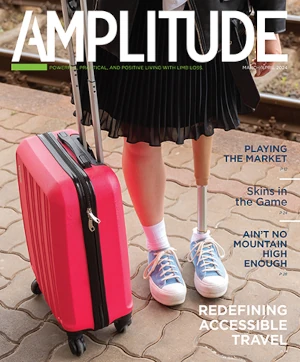
A team of researchers led by Conor L. Evans, PhD, assistant professor at the Wellman Center for Photomedicine of Massachusetts General Hospital (MGH) and Harvard Medical School (HMS), has created a paint-on, see-through, “smart” bandage that glows to indicate a wound’s tissue oxygenation concentration. Because oxygen plays a critical role in healing, mapping these levels in severe wounds and burns can help to significantly improve the success of surgeries to restore limbs and physical functions. The work was published in The Optical Society’s (OSA) open-access journal Biomedical Optics Express.
“Information about tissue oxygenation is clinically relevant but is often inaccessible due to a lack of accurate or noninvasive measurements,” explained lead author Zongxi Li, PhD, an HMS research fellow on Evans’ team.
How Exactly Does a “Smart” Bandage Work?
For starters, the bandage’s not-so-secret key ingredient is phosphors-molecules that absorb light and then emit it via a process known as phosphorescence.
“How brightly our phosphorescent molecules emit light depends on how much oxygen is present,” said Li. “As the concentration of oxygen is reduced, the phosphors glow both longer and more brightly.” To make the bandage simple to interpret, the team also incorporated a green oxygen-insensitive reference dye, so that changes in tissue oxygenation are displayed as a green-to-red colormap.
The bandage is applied by “painting” it onto the skin’s surface as a viscous liquid, which dries to a solid thin film within a minute. Once the first layer has dried, a transparent barrier layer is then applied atop it to protect the film and slow the rate of oxygen exchange between the bandage and room air-making the bandage sensitive to the oxygen within tissue.
The final piece involves a camera-based readout device, which performs two functions: It provides a burst of excitation light that triggers the emission of the phosphors inside the bandage, and then it records the phosphors’ emission. “Depending on the camera’s configuration, we can measure either the brightness or color of the emitted light across the bandage or the change in brightness over time,” Li said. “Both of these signals can be used to create an oxygenation map.” The emitted light from the bandage is bright enough that it can be acquired using a regular camera or smartphone-opening the possibility to a portable, field-ready device.
Immediate Applications and Future Goals
Immediate applications for the oxygen-sensing bandage include monitoring patients with a risk of developing ischemic (restricted blood supply) conditions, postoperative monitoring of skin grafts or flaps, and burn-depth determination as a guide for surgical debridement-the removal of dead or damaged tissue from the body.
“The need for a reliable, accurate and easy-to-use method of rapid assessment of blood flow to the skin for patients remains a clinical necessity,” said co-author Samuel Lin,MD, an HMS associate professor of surgery at Beth Israel Deaconess Medical Center.
“In the future, our goal for the bandage is to incorporate therapeutic release capabilities that allow for on-demand drug administration at a desired location,” said Evans. “It allows for the visual assessment of the wound bed, so treatment-related wound parameters are readily accessible without the need for bandage removal-preventing unnecessary wound disruption and reducing the chance for bacterial infection.”
This article is based on information provided by The Optical Society.



